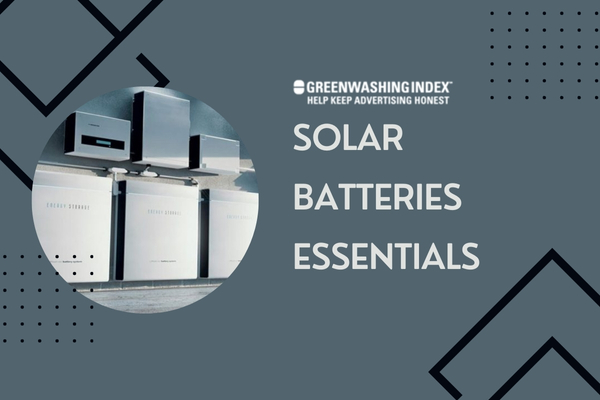Picking out solar batteries might seem tricky, but it’s a clever move in our sun-powered world. Imagine this: you’ve got your own little power station right at home, slurping up the sunshine and saving it for later.
Pretty cool, huh? But here’s the deal – you’ve got to know what to look out for, or else you could end up with a dud. And nobody wants that! So sit tight, ‘cause I’m about to give you the scoop on choosing solar batteries that’ll make your renewable energy experience shine bright.
When scouting for solar batteries, there are a few key things that matter. You want a battery that holds enough juice to power your needs—think of it like a backpack; too small and you can’t fit all your stuff, too big and it’s just extra weight.
Also crucial is how long they can keep doing their thing before they need replacing; imagine having a buddy that tires out after a short sprint while another can run marathons with ease—that’s what I mean.
Top-notch safety features and understanding the technical specs can save you headaches later on. And don’t forget about cost-effectiveness; snagging great performance without breaking the bank is always sweet!
A Quick Overview of Solar Batteries!
Now, what exactly are solar batteries? Think of these as special boxes that keep the energy from the sun safe for when we need it. You see, solar panels can catch sunlight and turn it into electricity during the day. But what about at night or on cloudy days when the sun isn’t shining? That’s where these clever batteries come in.
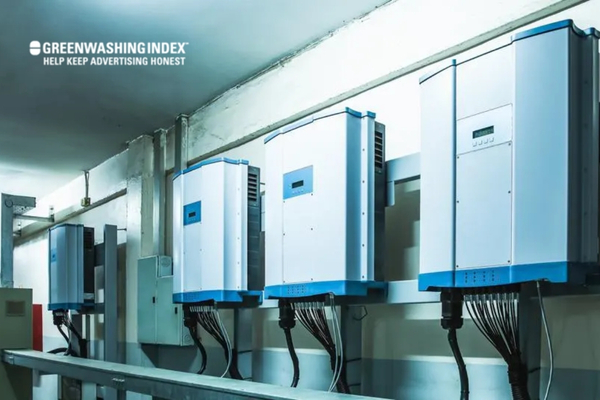
Solar batteries work hand in hand with a solar power system. This system includes solar panels, an inverter (which changes the type of electricity so we can use it in our homes), and other bits and pieces to manage the power.
Imagine if you could save a slice of cake from a party to enjoy later; solar batteries do that with energy – they store surplus power produced by your solar panels.
During the day, your solar panels might make more electricity than you can use right away. Instead of letting this extra energy go to waste, it gets sent to your solar batteries. Here, the energy is stored until you need it – like at night or during times when your panels aren’t making electricity because there’s not enough sun.
The role they play in energy storage is pretty important. When thinking about how useful they are, I like to compare them to water tanks. A water tank stores water when there’s plenty coming from the tap (or rain) so that you have something to drink even if there is no water supply for some time.
Similarly, solar batteries save up all that sunny goodness—allowing us not just to live but thrive off-the-grid or lessen our dependence on traditional (often more expensive and less eco-friendly) power sources.
Also Read: How Much Energy Does A Solar Panel Produce? Find Now!
Types of Solar Batteries
When it comes to picking solar batteries for your home, two main choices come up again and again: lithium-ion and lead-acid. These are like the big players in the game of storing energy from sunlight.
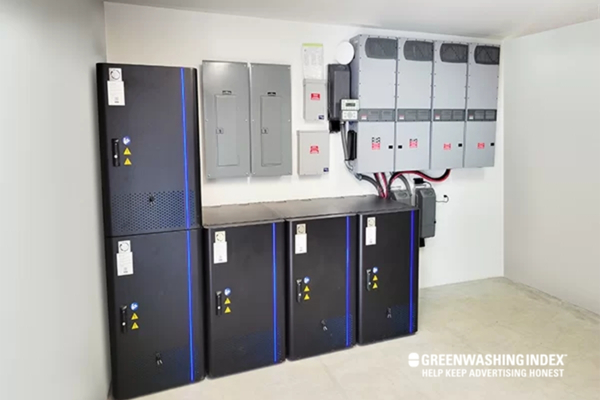
Lithium-Ion: The Leading Choice
First, let’s talk about lithium-ion solar batteries. You might have heard about them more often these days because they’ve kind of become the star of the show. Here’s why they’re so popular:
- Efficiency: They can use a lot more of the power they store which means less waste.
- Longer Life Span: They last longer than many other types. So you don’t have to think about replacing them too often.
- Space-saving: These batteries are usually more compact and lighter, so they don’t need much room.
- Quick Charging: They fill up with energy faster than some other types, saving time.
- Less Maintenance: You don’t need to check on them as much as other kinds.
It’s easy to spot why these batteries stand out in the market. If I’m talking cars, lithium-ion is like that new electric car everyone wants – it’s new tech that performs really well.
Lead-Acid: Cost-Effective Yet Reliable
Now for a classic – lead-acid batteries. They’re like that old trusty pickup truck your grandad had – not flashy but get the job done.
Here’s what makes people still go for lead-acid:
- Cost-Friendly: They are usually easier on your wallet when you buy them,
- Reliable: They’ve been around forever, and people know they work well enough.
But there are a couple of things you gotta keep in mind with these guys:
- Weight and Size: Let’s just say they won’t win any prizes for being light or small.
- More Check-Ups Needed: Expect to roll up your sleeves every now and then since these need a bit more looking after.
In places where every penny counts or where cutting-edge isn’t needed as much, lead-acid can be a smart move since it balances cost with reliability pretty well.
Both options have their perks depending on what you need. Whether you want something newer and sleeker with less fuss (lithium-ion), or an older but tested choice that might take a bit more care (lead-acid), there’s a solar battery out there for everyone.
Flow Batteries – Resilience for Renewable Integration
When it comes to storing renewable energy, flow batteries pack a punch. They’re not your everyday AA batteries. Instead, think of them like a belly that keeps getting refilled. These batteries have two tanks full of liquid chemicals mixed with water. These liquids flow through the system and create power when they meet each other.
Why are they so cool? Well, one big reason is the big storage they offer. This means if you have a solar farm or wind turbines, flow batteries can keep all that green energy stored until you need it—even if the sun sets or the wind stops blowing.
Also, these liquid tanks can last a pretty long time—way longer than the usual lithium battery in your phone or laptop. So if you’re looking at something big and long-term for green power, flow batteries could be just what you need.
Gel Solar Battery – Seamless Suitability for Off-Grid Use
Now let’s talk gel solar batteries—I mean these babies are pretty neat for places without power lines crisscrossing everywhere. Imagine living in a cabin in the woods; gel solar batteries can be your silent pal giving light all night.
Here’s what makes gel solar batteries great:
- Low maintenance: You don’t need to water them like plants or check on them as often.
- Spill-proof: Liquid doesn’t ooze out because it’s trapped in a jelly-like substance.
- Tough cookies: They handle rough weather and high heat without throwing a fit.
- Long lives: They won’t give up on you quickly—they last quite some time.
They’re perfect when you want to break free from utility poles and go live by nature but still want to charge your camera to snap those lovely sunsets!
AGM Solar Battery – Viable Venture For Versatile Applications
Talking about being useful anywhere, AGM (Absorbed Glass Mat) solar batteries are like Swiss army knives—they fit in so many situations. In an AGM battery, there’s no free-roaming liquid because it’s all soaked into fiberglass mats between the lead plates inside.
Their crowning features include:
- Spill-no-more: With everything snug inside, there’s no mess even if they tip over!
- Happy at many temps: Whether it’s chill cold or blazing hot outside, they work just fine.
- Their life is good enough for most needs—not too short but maybe not as long as some others out there.
These guys are friendly choices whether you’re trying to keep lights on in your home when storms cut off power or making sure farm equipment stays running smoothly far from any plug points!
Nickel-Cadmium Batteries – The Legacy Stalwart
Last up—nickel-cadmium (NiCd) batteries have been around forever (well not literally). They’re like those old toys that can take a beating and still keep ticking! But truth be told, folks don’t use them much anymore since folks realized they’re not super kind to Mother Nature due to their toxic insides.
However, if taken care of properly used right, they offer longevity and reliability which is why some people who don’t mind their extra weight might hold onto them for old times’ sake—or specific tech uses where only nickel-cadmium will do!
Also Read: Solar Power Basics: Unlock Clean Energy Mysteries!
Things To Consider While Buying Solar Batteries
When picking the perfect solar battery, you want one that matches your needs just right. Think of it like choosing a backpack. If you’re planning for a long hike, you’ll need a backpack big enough to carry all your supplies but not so big it weighs you down. Likewise, with solar batteries, size matters—a lot!
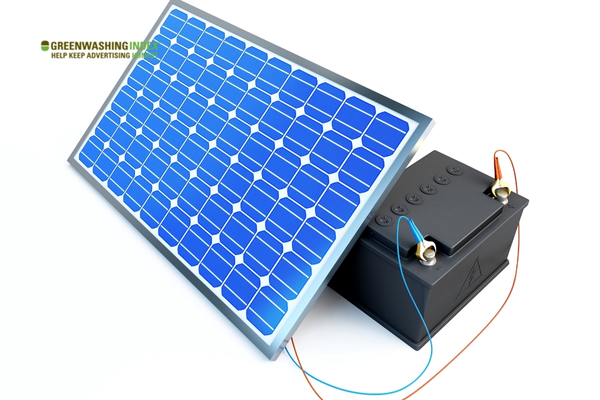
Assessing Battery Capacity Needs
Battery capacity is a top thing to consider when shopping for solar batteries. But why is it so important? Well, let me explain.
Capacity tells you how much electricity your battery can store and give out. Picture it as a water tank— the bigger the tank, the more water (or in this case, power) it holds.
Now think about your home or where you plan to use these batteries. Every appliance—like fridges and TVs—and lightbulb uses electricity differently; some sip on power while others gulp it down.
Here’s how I would find out just what size tank I need:
- List Out What You Use: Write down everything that’ll use the stored energy from your battery.
- Add Up Energy Use: See how much electricity each item uses per hour (this is measured in watts). Then add them all up.
- Think About How Long They Run: Multiply that total by how many hours they’d run during a day without sunlight.
- Get A Daily Total: This daily total is key—it gives you an idea of how much energy your battery must hold.
- Plan For No-Sun Days: Sometimes there’s no sun for days on end! So think about getting enough capacity to last through those periods.
Why nail down capacity? It stops two things:
- You don’t buy something too small and end up with blackouts because there was not enough juice.
- You avoid splashing cash on massive batteries that are overkill—a waste if you won’t ever use all that stored power.
Getting this right means having clean energy when needed without breaking the bank! Remember these steps when choosing solar batteries and they might just help in picking one that’s perfect for keeping lights on while caring for Mother Earth at the same time!
Understanding Power Rating Significance
When I look at solar batteries, one thing I make sure to check is their power rating. What’s that, you ask? Well, it’s how much electricity a battery can give you at any single moment. Picture this: You’re home and you turn on your air conditioner, cooktop, and washing machine all at once. A battery with a high power rating means you won’t be left in the dark.
Now imagine it’s evening time when most folks use lots of power. This is peak usage time because families are cooking dinner or watching TV. If your solar battery has a low power rating, it might not handle everything you’re trying to do. But if its power rating is high enough, no worries! It’ll keep everything running smoothly.
Here’s another example for clarity – think about two water tanks with hoses attached to them. One tank has a thin hose and the other has a thick hose. Even if both tanks hold the same amount of water (energy), the one with the thicker hose (higher power rating) can fill up more buckets in less time than the one with the thin hose.
Roundtrip Efficiency – Maximizing Energy Use
Roundtrip efficiency? It sounds like we’re talking about cars or something, but nope—it’s about solar batteries again! This fancy term just shows how good a battery is at storing energy without wasting any of it.
So here’s how it works: Remember our earlier image of those 2 water tanks? Well, just like we want to fill buckets fast (power rating), we also want as little water as possible to spill while filling them (efficiency). Simply put, if your solar battery has high roundtrip efficiency—that’s great!
Why does this matter? Because when sunlight hits your solar panels during the daytime and generates electricity—this into stored energy—nothing should go to waste before turning into usable electricity for us again later on night night or grey cloudy days when there isn’t enough sunshine around. You paid for all that sun-power; better get to use most of it right?
When I look into getting solar batteries, I really dive deep into the technical stuff. You’ve got to if you want to make a smart buy. So let me walk you through what’s important.
Delving into Battery Lifetime: Throughput and Cycles
Now, let’s talk about battery lifetime. This is super important. It tells us how long a solar battery will last before it’s not as good as when we first bought it.
- Throughput: This is how much energy in kilowatt-hours (kWh) a battery can give out over its life. High throughput means more energy and possibly longer life.
- Cycles: Imagine charging your phone; one full charge to one full use is one cycle. Solar batteries are the same! They rate these by how many cycles they can handle before they start losing their mojo – we call this capacity fade.
So, I pay close attention to:
- Total throughput – Big numbers here mean more bang for my buck over time.
- Cycle count – More cycles? That means it won’t quit on me so soon.
By checking these two, I ensure I’m picking solar batteries that won’t give up too quickly.
Prioritizing Solar Battery Safety
Safety is non-negotiable for me when it comes to choosing solar batteries. No one wants a risky battery at home!
Here’s what I look at:
- Thermal Management Systems: Batteries can get hot, right? Good thermal management keeps them cool and safe.
- Certifications: These are like gold stars from safety experts telling me which batteries passed tough tests.
To pick safely, my checklist includes:
- Heat Control Features – A constant check keeps the temperature just right.
- Safety Seals of Approval – Certifications from bodies like UL or TUV? That’s reassurance in badge form!
With those points checked off, I know my home’s energy storage solution isn’t just handy but safe as well.
Considering the Battery Chemistry
When I’m on the hunt for solar batteries, understanding the battery chemistry is a big deal. This means looking at what the battery is made of and how this makeup affects its performance and maintenance. Let me break down two common types: lithium-ion and lead-acid.
Lithium-ion batteries are kind of like the cool kids on the block. They’re known for being lighter and more compact, which makes them really appealing for my solar setup. But their standout feature? They pack a lot of power and can handle many charge cycles – that’s how many times you can charge and discharge them – which is awesome for longer-term use.
Now, lead-acid batteries are more old-school but still quite popular because they tend to cost less upfront. They’re usually bigger and heavier than lithium-ion, so they might take up more space. Here’s another thing to consider: lead-acid batteries need a bit more love with regular maintenance to keep them happy.
So, here’s what I think about when choosing between these two:
Understanding Depth of Discharge (DoD)
Now let’s talk about the Depth of Discharge (DoD). Imagine DoD as how much I can use before needing a recharge—it’s like running until you’re super tired but not totally out of breath. It’s crucial because if I respect this limit, my solar battery will thank me for having a better life—meaning it won’t quit on me too soon.
Batteries have different DoDs based on their chemistry. Let me give you an example:
- Some lithium-ion batteries let me use up to 90% or even more without getting upset about it—that’s high DoD!
- On the flip side, lead-acid ones prefer if I only use about 50% before recharging—that’s lower DoD!
Why does this matter? If I get greedy using too much power before charging again, it’ll likely shorten my battery’s life—like burning out too fast from running marathons without training properly!
So here’s what you want to remember about depth of discharge:
- Keeping within recommended limits helps my battery last longer; pushing beyond that could mean waving goodbye earlier than expected.
- Each type has its own sweet spot—I check the manual or ask an expert where that line is drawn for my particular solar battery.
Also Read: Solar Panel Cleaning Made Easy – Top Tips Revealed!
Economic Aspects of Solar Batteries
When we talk about solar batteries as part of renewable energy storage solutions, it’s not just about the technology – money matters too. Let’s look at how you can navigate through the costs and features to get the best deal.
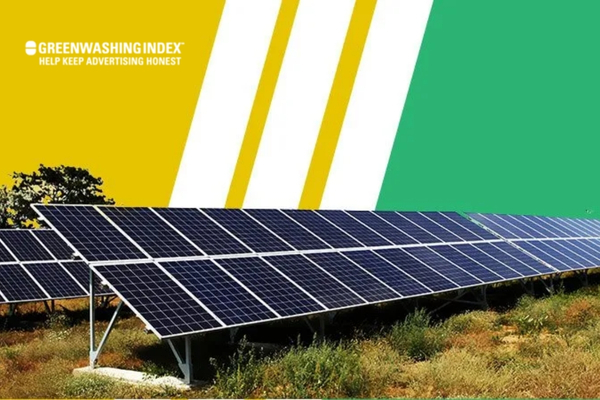
Analyzing Price Versus Performance
When choosing solar batteries for your home or business, thinking about money is just as important as thinking about how good the batteries are. So, here’s what you should think about:
- Compare Prices:
Start by looking at different kinds of solar batteries and see how much they cost. Don’t just look at one or two; check out a lot so you have a good idea of what prices are out there. - Check How Well They Work:
Find out how long each battery will last during a power cut and how much electricity it can store. A battery that can’t hold a lot of electricity or wears out fast might not be worth it, even if it’s cheap. - Understand Lifespan:
Some batteries may work for more years than others before they need to be replaced. If a battery costs less but doesn’t last long, it might end up costing more in the long run. - Efficiency Matters:
Efficiency means how well the battery turns stored energy into usable electricity when you need it. High efficiency is good because it means less energy is wasted.
By keeping these points in mind, I want to make sure that when you’re spending money on solar batteries, you’re getting something that does its job well without breaking your bank account.
Deciphering Warranty Details for Long-Term Peace of Mind
Now let’s chat about warranties – those promises that manufacturers make to fix or replace your solar batteries if something goes wrong:
- Lengthy Warranty Periods Are Good: Look for warranties that last many years – longer warranties show that companies believe their solar batteries will last too.
- Read The Fine Print: Always read all the details in the warranty paper (yes, all those small words). You need to know exactly what things are covered and what aren’t.
- Know The Limits: Sometimes a warranty will only cover certain parts or types of damage or problems but not others.
- Transferability Is Handy: If you’re planning to sell your property in future years having a transferable warranty allows the next homeowner peace of mind thus increasing the value
- Understanding Replacement Terms: Some warranties will give you a brand-new battery if there’s trouble while others might only fix broken parts
By knowing all this stuff about warranties I want to make sure when things go sideways with your investment help is indeed on its way Then again remember great warranties often come with price be wise and consider such factors when making a choice
So folks when deciding between any type of energy storage solution, especially solar batteries take time to think over these financial aspects cause end day want confidence what purchased was worth every penny!
Also Read: Paint Recycling: The Ultimate Guide to Responsible Disposal
Final Advice Before You Buy
When you’re looking to buy solar batteries, there’s one key piece of advice that I’d like to share: take your time to learn about the different types of batteries. Don’t get caught up in the flashy ads and the fancy marketing terms. Instead, focus on what’s truly important – understanding each type’s distinct features and best use cases.
Get Familiar With Battery Types — They’re Not All Created Equal
There are several kinds of solar batteries out there, and they all have their own strengths and weaknesses. Here’s a rundown that can help clear things up:
- Lead-Acid Batteries: These are the veterans of the battery world. They’re affordable and have been used for decades in off-grid energy systems. However, they’re not as long-lasting or efficient as some newer technologies.
- Lithium-Ion Batteries: These are more contemporary. They last longer than lead-acid batteries and are much lighter too. That makes them great for home solar systems where space might be limited.
- Nickel-Cadmium (NiCd) Batteries: These aren’t as common for solar energy storage but do come with their benefits like a wide range of operating temperatures and long life expectancy – though they can be more expensive.
- Saltwater Batteries: As a new kid on the block, these are an environmentally friendly choice since they don’t contain heavy metals – making them easier to recycle or dispose of.
Here is why knowing your battery types matters:
- Durability – Some batteries can handle more charge cycles (that’s when you charge up a battery and then use its power) than others before they start losing capacity.
- Efficiency – This is about how well a battery can keep hold of the energy it stores without losing too much over time when not in use.
- Size and Weight – How much room do you have? And if you need to move them around, will their weight be an issue?
- Cost – Price isn’t just about what you pay upfront; it also includes how often you’ll need to replace your batteries over time.
- Maintenance – Will your batteries need regular check-ups or certain conditions to work best?
So before you pull out your wallet, sit down with some good ol’ research first; read articles, watch videos, and maybe even chat with folks who already own solar panels with storage solutions attached – this will give you clarity on which type suits your needs perfectly!
By understanding these differences between types of solar batteries – beyond just what sounds cool or is cheapest right now – you’re in better shape for picking an energy storage solution that matches your life for years to come! Remember: good choices today make tomorrow brighter… especially when we’re talking solar power!
FAQs
How Long Do Most Solar Batteries Last?
Most solar batteries can last anywhere from 5 to 15 years. It depends on the type of battery and how it’s used.
Can I Use Any Type Of Battery With My Solar Panels?
No, not all batteries are right for solar panels. You should choose a battery designed for renewable energy storage.
How Many Solar Batteries Are Needed To Power A Home?
The number of solar batteries needed can vary a lot. It depends on your home’s energy use and the size of the solar panel system.
Conclusion
To sum it up, picking the right solar batteries is a decision that should not be taken lightly. The idea is not just to grab any renewable energy storage solution but to select one that aligns with your specific needs and usage patterns.
Energy storage solutions play a crucial role in maximizing the benefits of solar power systems, and understanding battery technology is key to making an informed purchase. Whether you’re looking for longevity, cost-effectiveness, or performance during peak times, analyzing the different aspects of solar batteries will guide you toward a smart investment.

